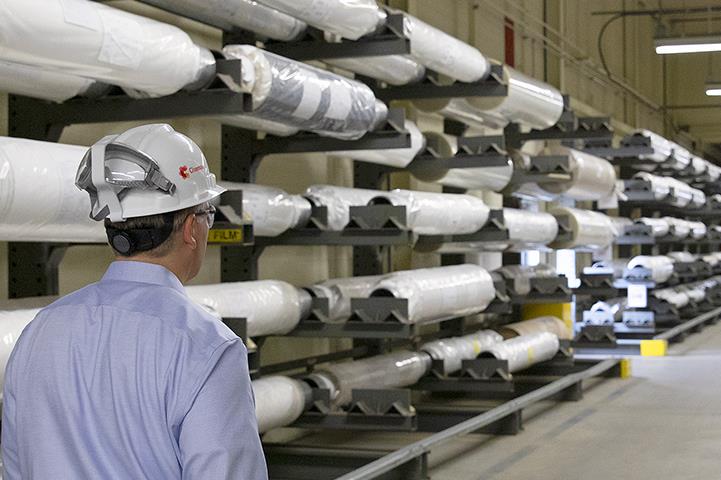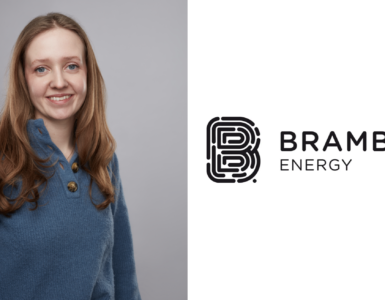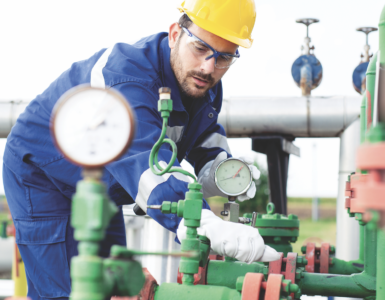Hydrogen Central had the opportunity to sit down with Denise Dignam to discuss the role that Chemours is playing in the hydrogen economy, particularly with its division Advanced Performance Materials (APM).
Growing demand for clean energy has called more attention to the hydrogen production process. While there are different ways to produce hydrogen, using an ion exchange membrane in an electrochemical cell is an environmentally safe way to generate large amounts of hydrogen without carbon dioxide.
This application complements the environmental benefits of using a renewable energy source for electricity. Chemours’ Nafion™ membranes provide very good separation of hydrogen and oxygen gases over a broad range of pressures and temperature during water electrolysis.
Denise Dignam, president of Advanced Performance Materials, is a professional with over 30-years of chemical industry experience with proven leadership across multiple areas including significant experience in commercialization, sales and marketing, strategy, supply chain, and operations.
🔥 What about we co-host a webinar? Let's educate, captivate, and convert the hydrogen economy!
Hydrogen Central is the global go-to online magazine for the hydrogen economy, we can help you host impactful webinars that become a global reference on your topic and are an evergreen source of leads. Click here to request more details
Denise shared with us a market overview and provided answers to our questions about the impact of Nafion™ membranes in the development of fuel cell heavy duty vehicles. These are the questions.
The division you are leading plays a key role to make electrolyzers work, what can you tell us about the Advanced Performance Materials division at Chemours when it comes to revenue, the growth of the team, new products development?
Net Sales of Chemours’ Advanced Performance Materials (APM) division in 2020 was 1.1 billion USD, which was negatively impacted by COVID 19.
In the first three quarters of 2021, APM has delivered to that level. While we have great diversity in our markets and expect GDP growth over the next couple of years, we expect the secular growth opportunities we are investing in to kick in mid-decade.
APM is investing in areas with long-term, attractive growth expectations like clean energy and advanced electronics. We are investing heavily in R&D, and as an example, have more than doubled the size of the technology team that is supporting our Nafion™ product line, with a specific focus on developing new products that will support multiple applications in clean energy, such as water electrolysis, fuel cells, and energy storage.
Can you briefly describe the role of the Nafion™ membranes in hydrogen production?
Hydrogen is produced through a water electrolysis process, where Nafion™ membranes are a critical component within the water electrolysis stack.
The stack is comprised of many cells, with each cell containing a Nafion™ membrane that separates the cathode and anode. The Nafion™ ion exchange membrane is what allows hydrogen to pass from the anode to the cathode, which are also formulated with Nafion™ catalyst dispersions.

How have the sales of Nafion™ membranes evolved over the last 5 years?
While we do not report out the sales of a specific product from the family of products within APM, we have supplied Nafion™ membranes for many decades, and they have been used in a variety of electrochemical applications, with one of the largest applications being the production of chlorine and sodium hydroxide.
We are a leading player in this space today. However, over the past five years, there has been significant growth in the membranes used in clean energy applications, such as energy storage and water electrolysis as well as in the fuel cell applications in mobility. It is fair to state that our Nafion™ membrane sales for clean energy applications are in line with expected market growth.
What kind of projects are the most promising at the moment for electrolyzers?
By far the most promising applications are for water electrolysis powered with a renewable energy source to produce green hydrogen. There have been many smaller, successful demonstrations of this technology, with larger systems being developed by multiple clients now moving to the tenths and hundreds of Megawatt with PEM technology.
We are very encouraged by the significant attention to the production of green hydrogen via PEM water electrolysis and feel that these are the most promising.

Do you provide support and/or tailor-made solutions for electrolyzer makers?
We do provide support to our electrolyzer customers – with technology support to help our customers in the fabrication of the membrane electrode assemblies that are used in constructing an electrolysis stack, and also in the development of new to the world Nafion™ membranes that will help improve cell efficiency and extend stack lifetime.
What is the main challenge you expect to overcome to seize the market in the medium term?
There are many challenges to building out hydrogen production from water electrolysis in medium term, and we are confident in our ability to advance membrane performance to meet the needs of electrolysis makers in a sustainable manner, while also addressing circularity.
We see the challenge as being more associated with strong government policy support to incentivize collaboration across making, distributing, and consuming hydrogen. We are very encouraged by the various companies and government policies that are aligning to support the development of hydrogen fuel cells for heavy transport and hard to abate industries.
What would be the reason for an electrolyzer maker not to use your membranes? What is setting you apart from other membrane providers?
An important thing for electrolyzer makers to know is that we have a fully integrated supply chain – we make the basic ingredients that are used to produce Nafion™ membranes and we have deep knowledge in how to responsibly manufacture these materials.
This fully integrated supply chain and our commitment to responsible manufacturing is a differentiator for Chemours and APM, and aides our ability to deliver for our customers against their current and future requirements.
Denise Dignam – The role of Chemours’ Advanced Performance Materials division in fuel cell heavy duty vehicles
According to the manufacturers of heavy duty vehicles, an operating temperature above 90 degrees Celsius is desired to optimize the BoP (Balance of Plant) in fuel cell trucks; is the use of current Nafion™ variants also suitable for these conditions or are you considering developing a different family of membranes for high temperature applications, that is suitable for PEMFCs in heavy duty vehicles?
Membranes for heavy duty vehicles is squarely an application we are innovating for. There are many levers being explored with partners to achieve the performance and cost requirements of this application.
Also on the topic of heavy duty mobility, the fuel cell truck manufacturers have made it clear that, to achieve a “million mile fuel cell truck” (cf. M2FCT initiative in the US), thereby making fuel cell trucks competitive with diesel trucks, a PEMFC should resist cell degradation for a minimum of 30,000 hours (as opposed to 8,000 hours, the previous benchmark of durability in passenger vehicles); is the current state of the art of Nafion™ variants up to this challenge or can we expect improvements in membrane durability?
We are actively engaged in multiple areas to help deliver a solution that will address this challenge.
One of the current trends in the development of electrolyzers is high pressure electrolysis, in particular to reduce compressor costs when transporting the hydrogen using existing (or new) pipeline infrastructure (which operates at a pressure around 80-100 bar depending on the country); are the current Nafion™ variants used in PEM electrolysis (N115, N117, N212, etc.) also suitable for high pressure applications or would it represent a challenge for the current generation of PEMs? Can we expect developments in this regard (100 bar PEM electrolysis)?
You are correct, production of hydrogen at elevated pressures reduces compression costs. The membrane coupled with the cell design is required to achieve operation at elevated pressures.
Our current membranes can be effectively used to operate at elevated pressures when coupled with an appropriate cell design. We have active projects to understand the fundamentals of our membrane mechanical properties and how we may influence the rate of hydrogen transport across the thickness of the membrane.

According to a recent study by IRENA, there will be a worldwide estimated demand for electrolyzers in the order of 300 GW by 2030, of which we can expect around 50% to be done with PEM Electrolysis. Moreover, it is likely that a fuel cell heavy duty vehicle market develops in the short term, following the success of pilot rollout projects by Hyundai, Toyota, etc. Considering all the demand that will arise in the short term, what are the current efforts Chemours is doing to scale-up its manufacture of PEMs and lowering their cost?
We have heard that before, based on market projections for fuel cells in the past, but the reality today is very different because we are talking about making green hydrogen and fuel cells.
We are also aware of the potential need to expand production to meet the market demand for Nafion™ membranes and are looking into what will be required and by when to support the market growth.
To wrap up, is there any closing message you’d like to share with our readers at Hydrogen Central?
Chemours is a different kind of chemistry company that makes products that are critical to modern day living and enabling a low carbon future. We are committed to using the power of our chemistry to solve the world’s most challenging problems – and climate change is exactly one of those issues.
We know that the world needs more than just highly effective and advanced solutions, it also needs them to come with an unwavering commitment to sustainability. We embrace this mandate and are helping to lead the industry in responsible manufacturing, including a commitment to climate.
We are eager to work with others to address this urgent global challenge, and as part of that collaborative effort, Chemours became a steering member of the Hydrogen Council and joined Hydrogen Europe and the European Clean Hydrogen Alliance.
Visit Chemours’ website for more info on their Advanced Performance Materials division
READ the latest news shaping the hydrogen market at Hydrogen Central
Copyright © Hydrogen Central. All Rights Reserved.








